If you could live past a hundred, what would you want to be able to do?
Longevity has always been sought after, but it's only meaningful if you can still be active and illness-free. Okinawa has captured international attention as one of the places with disability-free life expectancy. They have 47 centenarians per 100,000 population, of whom 84 per cent are women.
Here with me is one of the centenarians, whom I visited on my special trip exploring longevity traits in Okinawa. She can still get up from her wheelchair, and her hand movements are still fluid with grace.
It also helps that there is a reverence for the elderly that has helped them in terms of social standing and support. On this trip specially tailored by the Okinawa Tourist Service (see part 1 here), we went to many places of interest involving the elderly and their lifestyle, and we got to listen to talks by longevity and gerontology experts.
Ogimi Village and Emi no Mise
Healthy, organic slow food.The way grandma used to make.
Their traditional diet is healthy, with plenty of vegetables, tubers, soy products and seaweed. They eat very little meat (mostly pork) and some fish. Many of the "obaa" ("grandma"-like term of endearment for elderly ladies) still work their gardens and pluck the harvest for their family meals.
Food really matters because the Okinawans who moved overseas (to Brazil, for example) and adopted diets rich in red meats, saw their life expectancy plummet 17 years, all within one generation.
And at one particular restaurant, Emi no Mise, you can sample some of the food that has kept them healthy. Emi means smile, and it's also part of the shop owner's name Emiko Kinjo. She is such a lovely lady with a bright sunny smile, true to her name.
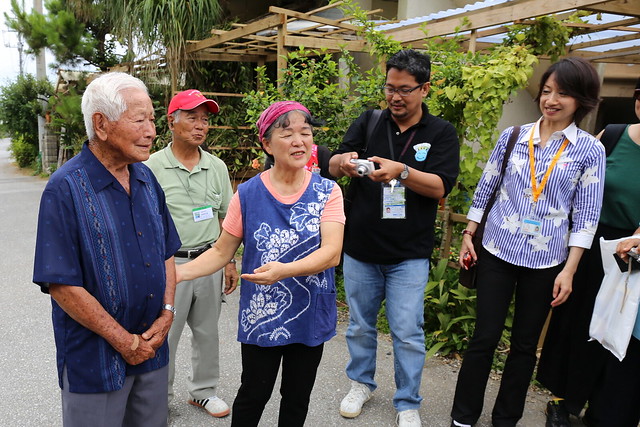
Here she is (centre, with headcap) introducing one of the elderly chaps from Ogimi village.
Ogimi Village is in the north of Okinawa's main island, which has many active centenarians. Six of Ogimi's 3,500 residents are 100 years old or older — that's almost 171 centenarians per 100,000. It looks like even Health Minister Khaw Boon Wan has taken a trip there to check out the village and the secrets it holds.
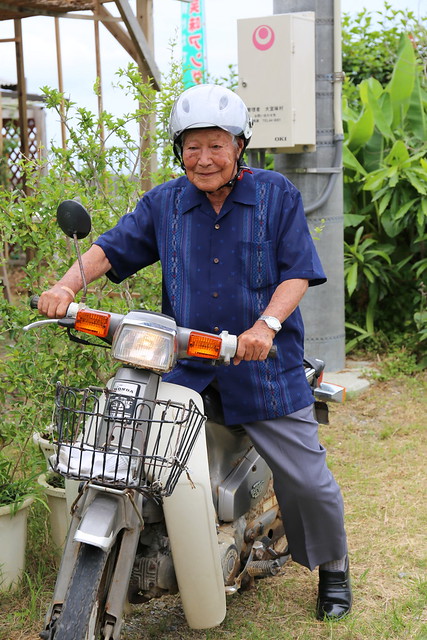
This guy is in his 90s but still gets around on a motorcycle!
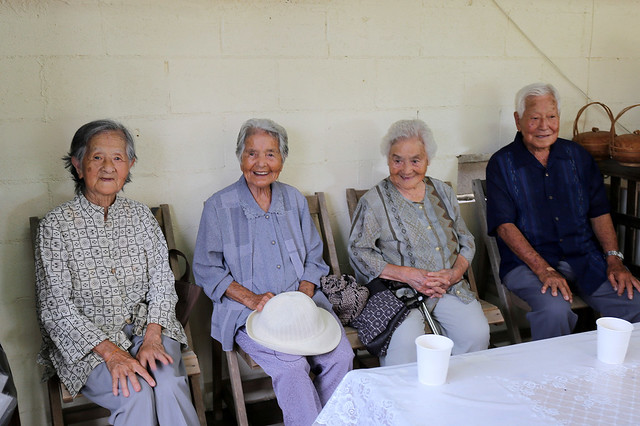
We also met other elderly folks from the village. They are in their 80s and 90s. Still young, according to local tradition. In the village, there is a stone carving with an old saying - "At 70 you are still a child, at 80 a young man or woman. And if at 90 someone from Heaven invites you over, tell him: 'Just go away, and come back when I am 100.' "
That is so awesome.
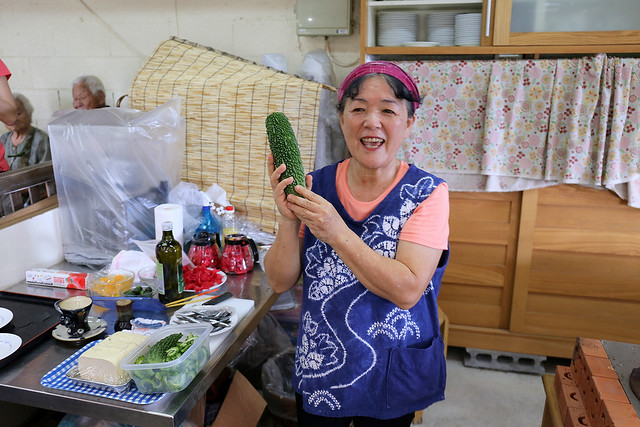
Emiko gave us a demo on how to cook a simple meal that any goya champuru - a mixed stirfry with bittergourd and egg. Here she is showing us the goya or bittergourd, which is very predominant in their diet.
I hated bittergourd as a kid, but have started liking it recently, especially after my first trip to Okinawa.
The Okinawan way of stirfrying bittergourd is quite similar to the Chinese, but they don't use garlic. Otherwise, it's really very flexible - you can add most any ingredients you like. Here is an approximate recipe, which I wrote for Yahoo Makanation:
http://sg.entertainment.yahoo.com/news/goya-champuru-recipe-longevity-143029914.html
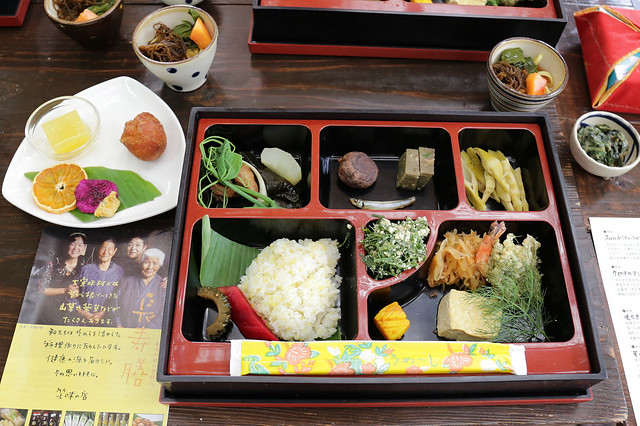
Here is the lovely longevity lunch bento that we had. Each compartment features ingredients grown right in the garden behind the restaurant. They have an English menu.
Places like Emi no Mise are even more important now than before, as Western diets and influences have crept in and affected their longevity records. The younger generation espousing fast food and greasy meat-laden fare will probably not see the same life expectancy.
EMI NO MISE
Address: 61 Aza Oganeku, Ogimi Village
Tel: +81 980 44-3220
Hours: 11:30 a.m. - 5:00 p.m.
Closed: Closed on Mondays and Tuesdays
Credit cards: not accepted
Reservations are required
Kariyushi Longevity University
Life-long learning.This is another cornerstone of longevity, and ties in with their sense of purpose. A reason for living, something that gets them up every morning.
In Okinawa, there is no such word as retirement. Most feel the official retirement age of 60 years is too early, so it's common to see the elderly continue in age-friendly workplaces, self-employed trade or opening a new family business with their retirement bonus. They just want to continue doing something. Something useful.
But some may choose a different path or pick up something new.
One facility in Okinawa helps them get the relevant training. At the Kariyushi Longevity University, you have to be 60 before you can qualify as a student. They study culture, lifestyle, health and other subjects.
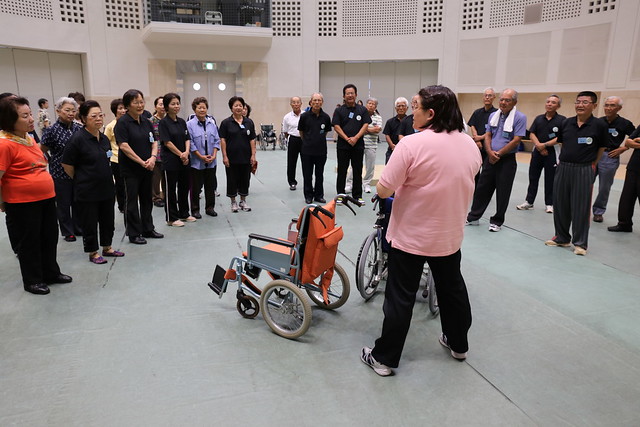
When we visited, we saw some of the training sessions. This group is learning how to care for the handicapped. Some learn to do childcare. It's all about contributing back to society, and feeling useful.
Guess what? These people also start with morning exercises! This instructor in peach shirt sure surprised us with a lot of flexible moves that even some of us had difficulty with!
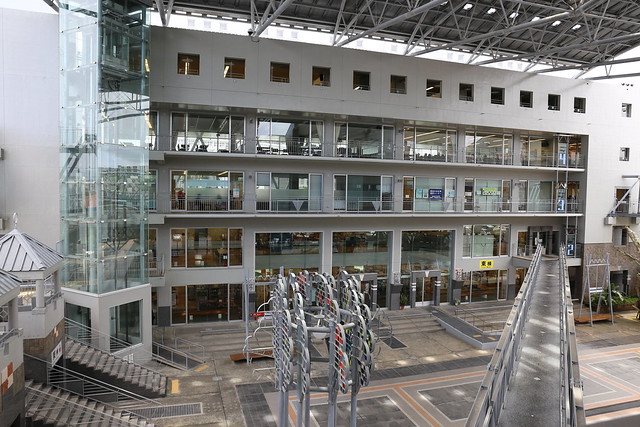
The Longevity University is housed in a social services complex. I was very impressed. For a population of 1.4 million, they had some very swell facilities. This building is quite new, less than 10 years old.
Both Singapore and Okinawan societies follow the Confucian reverence for the elderly, but it seems more entrenched there, so elderly can continue to work in an environment of respect.
They have also a slower pace of life and this probably helps ease the pressure on the elderly to perform.
In Singapore, some bosses just think of older workers as less desirable, being slower and needing higher salaries.When we view them as mere cogs, we lose out on their wealth of life experience.
It would be ideal if the elderly in Singapore can also choose the kind of work that fits and interests them most. Training in a university like this would be priceless.
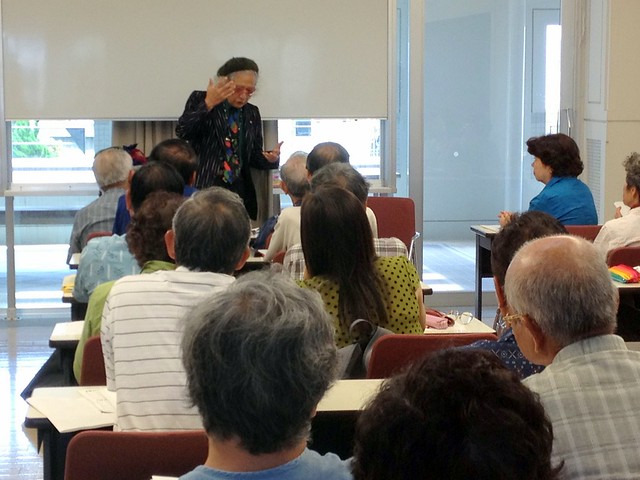
There are some really nice classrooms and labs. Some I particularly liked this instructor with the beret. She is so cool. She's clearly well into her years, but hasn't stopped teaching. And she's helping others on their path. It's not surprising that expanding your mind and being purposefully engaged can keep you going in life.
The Okinawans have set a marvellous example in lifelong learning, and formalised it in this university (there's a waiting list to get in too, by the way).
In Singapore, older workers can tap on resources like NTUC’s new e2i campus to continue lifelong learning and upgrade their skills.
As one NTUC leader put it, “What you see is not age, what you see is capability.
I am truly all for this: Lifelong learning. Don't ever stop.
Churayuntanza Nursing Home and Utopia
Cheerful living facilities.Now, most nursing homes make me think of depressed places filled with people who are just waiting for their end, arduously passing time with blank stares and faraway thoughts. I never want to be in one.
But I was surprised at what I saw in Okinawa.
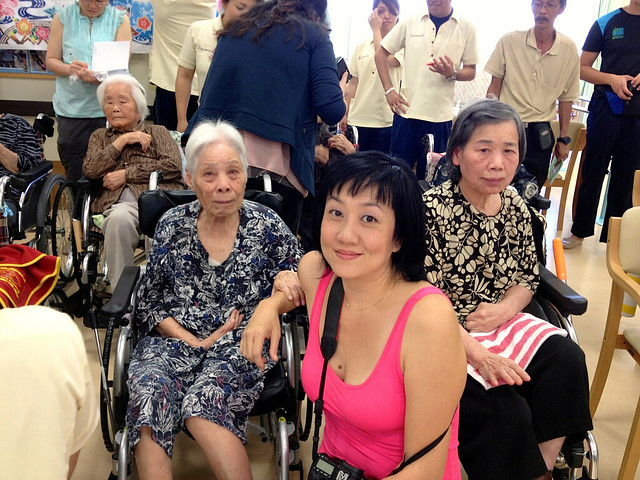
There was a vibrant energy and unusual cheer. Much of it imparted by the very dedicated staff, but also from the elderly folks who joined us in singing and dancing (those who could).

The centre director of Chura-yutanza nursing home, and the Head, Gerontology Programme at SIM University.
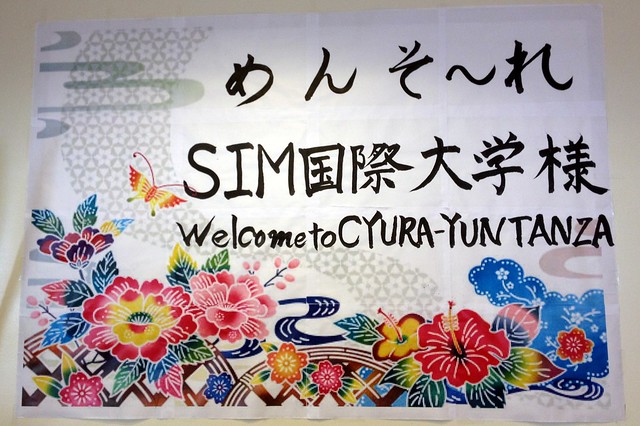
They gave us such a warm welcome too.
We also visited another place called Utopia.
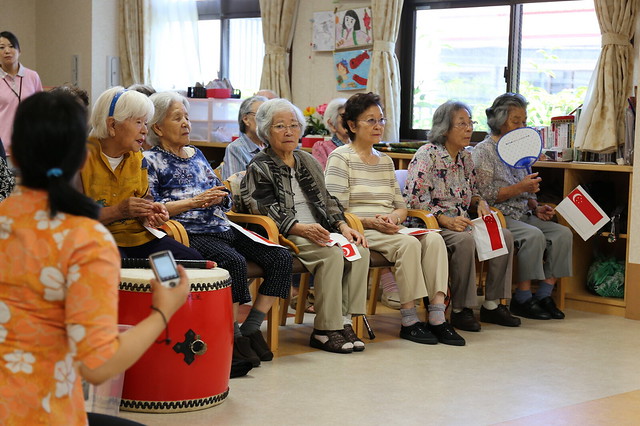
This is actually a hospital with daycare programs for the mobile elderly.
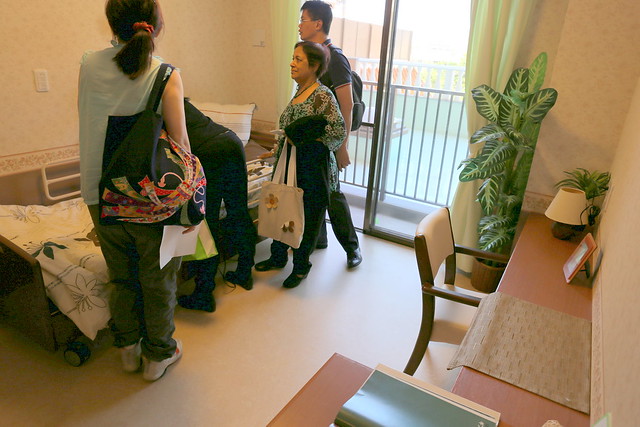
Their rooms are really nice too! Almost like self-contained apartment rooms.

I really like how music and dance is such a big part of their culture.
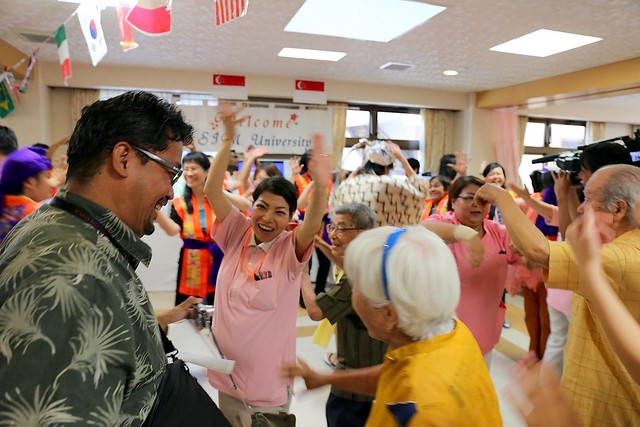
Even the elderly love to join in. Watching them just fills your spirit with joy.
So many people lose their joie de vivre halfway through life, or persist in a depressive state, sulking at life for being tough - plainly indulging in unhappiness. Not here. Who has time for toxic negativity? Even a long life is too short for that.
Himeyuri Peace Memorial Museum
Psychological Resilience.It isn't a Pollyanna attitude or lack of tribulations that make Okinawans enjoy longer lives. The Himeyuri Peace Memorial Museum is one of the many reminders of what the islanders have suffered in times of war.
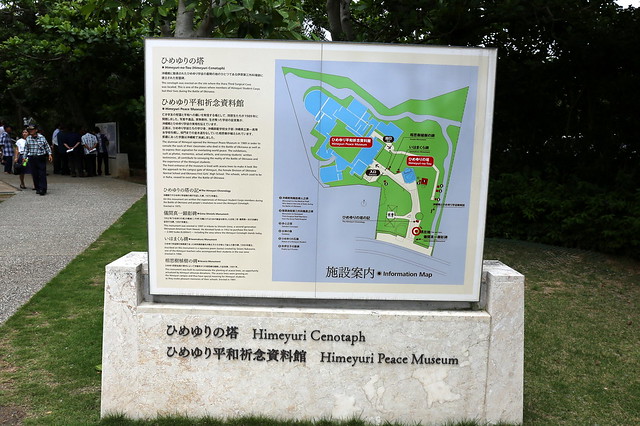
The Battle of Okinawa was particularly savage, claiming the lives of 200,000 Okinawans. Among these, were more than 200 girls aged 15 to 19, and some teachers from top girl schools. They were mobilised as nurse assistants, and were known as the Himeyuri (Princess Lily) Student Corps.
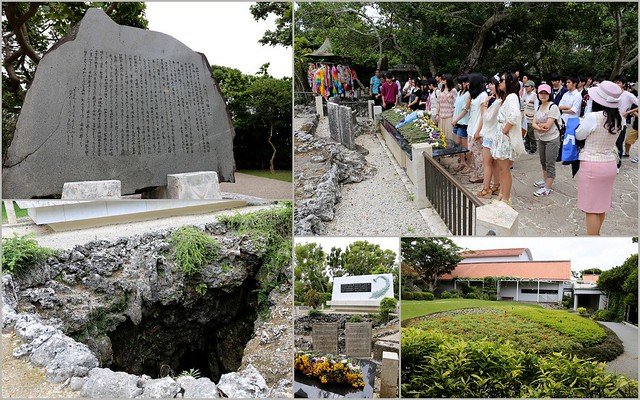
The girls with no prior training were forced to work in army field hospitals hidden in caves without Red Cross protection. There were shells flying overhead the dark, dank and putrid network of caves in which they worked.
The tragic thing is, on 18 June 1945, the defenseless girls were ordered out of the caves, but forbidden to surrender. They were helpless against the onslaught of the American bombardment. With no protective shelter or rations of food and water, most of the young girls perished. Others committed suicide with Japanese-supplied grenades held close to their chest.

We had the great privilege of listening to an actual survivor (now aged 88) relate the harrowing experiences she endured as a teenage school girl in the caves filled with the wounded and dying - no clean water, barely any food, no sleep, no fresh air, the ever present danger of bombs and mortar shells, and even abuses flung at them from the anguished Japanese soldiers they were trying to treat (Okinawans were looked down upon by mainland Japanese).
You can read more about it here.
Her account was so emotional and heart-wrenching. Even today she fights back tears and her voice chokes as she recounts the horrors in detail. But you know what she said when we asked her what she thinks of Americans? "Americans...are still human beings."
The ability to endure suffering of this level, and yet forgive with a mature outlook, requires unspeakable strength. But only when you do so, can you re-embrace life and let joy back in.
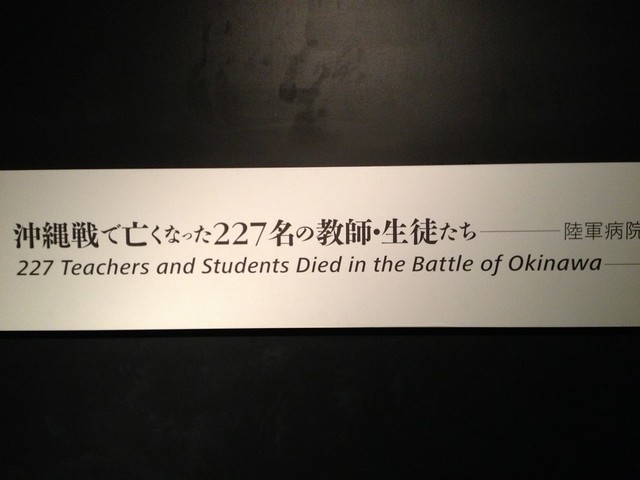
The Peace Museum exhibits photographs of the many victims, their personal effects, panels explaining the circumstances under which they died, a life-size diorama of the Himeyuri cave, and testimonies from 90 survivors. All of this exposing the insane atrocities of war, and appealing for peace.
HIMEYURI PEACE MEMORIAL MUSEUM
671-1, Ihara, Itoman-City, Okinawa Prefecture, 901-0344 (Here's how to get there)
Tel: +81 98 997-2100
Open daily from 9am to 5pm (last visit 4.30pm).
Prefectural Karate Museum
Sports.The other thing Okinawans do is keep active. Karate began in Okinawa.
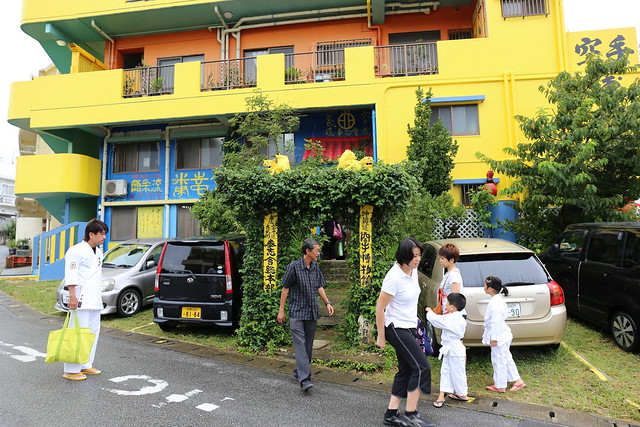
Karate and martial arts fans should definitely visit the Okinawa Prefectural Karate Museum. It's housed in this bright yellow building.
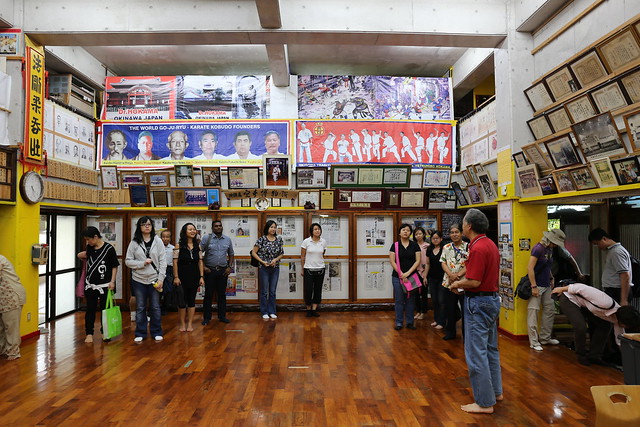
The founder and museum director (foreground, in red shirt) is Tetsuhiro Hokama, who is also an expert in Okinawan history and longevity. He has some 22 books under his belt too.
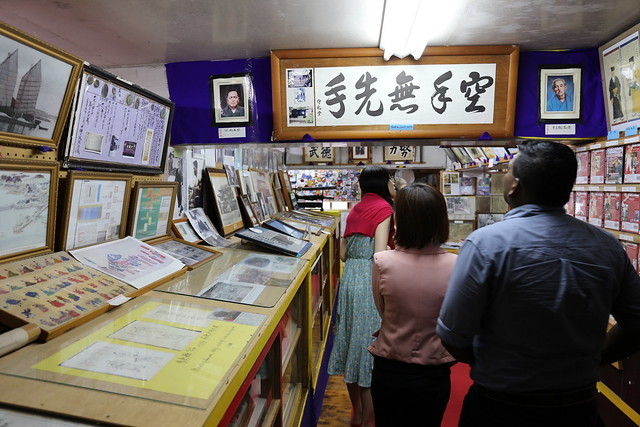
Hokama sensei has amassed quite a collection of historical items relating to karate. It's practically bursting at the seams on the second floor. I was surprised to see Indian items and pictures, but learned that karate has some origins from Indian martial arts.
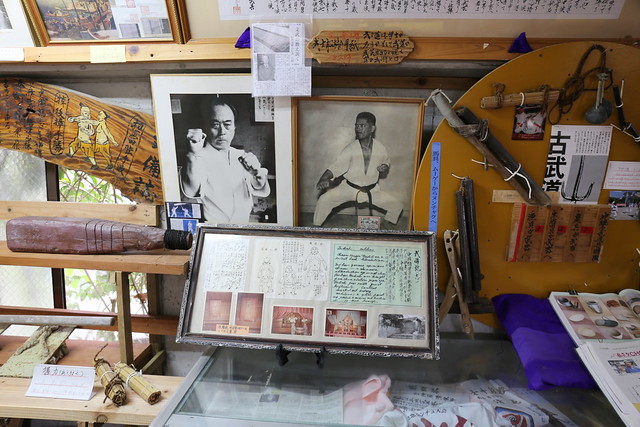
There are photographs of karate masters, weapons, and amazing knick-knacks. For a small fee, you are able to look at the collection, and there is an additional fee for taking photographs/videos.

A katana - Japanese sword. The Japanese are amazing swordsmiths.
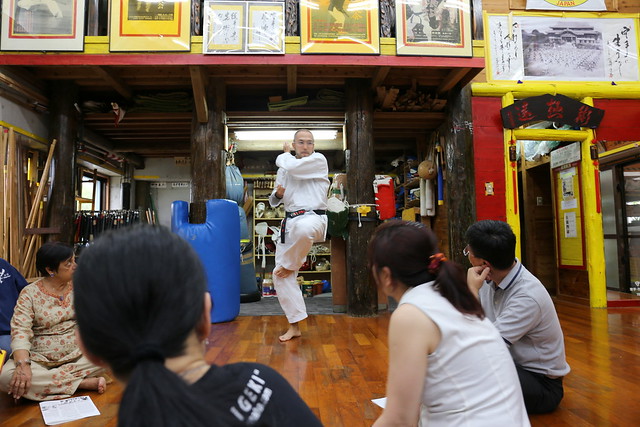
We were entreated to demos by the disciples and masters.
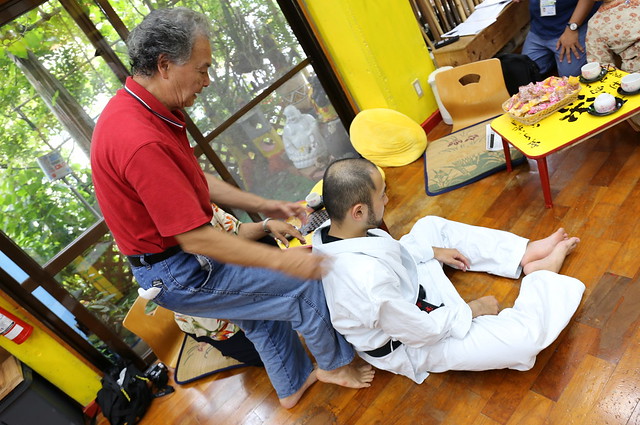
There are all kinds of moves, even for relieving jet lag - using the knee in between the shoulder blades somehow. Hmm, I wonder who I can experiment on to see if it works...
But as you know, there are a lot of misconceptions about karate. There is a deep connection with spiritual development and meditation. Karate also massages the acupressure points in the feet. The harnessing of ki is very important. Hokama sensei even mentions herbs, horse riding, acupuncture, aromatherapy and swimming. He can really tell you many, many intriguing things. Count my mind blown.
By the way, the oldest disciple he ever had started at age 74. You're never too old to learn something new!
The Okinawa Prefectural Karate Museum
147-2 Uehara , Nishihara, Okinawa, Japan
Tel: +81 98 945-6148
Open Tuesdays and Fridays (please call ahead if visiting on other days)

This trip has been extremely enlightening and soulful at the same time. I hope that the traits that help Okinawa extend their life in meaningful ways will continue to stay, and also benefit anyone who want to learn from them.
Many thanks to Dennis Tortona from the Okinawa Tourist Service for making this trip possible. If you are keen on including such special interest aspects in a tour, please feel free to contact them for assistance. Call +81 98-859-8887 or email dennis@okinawatourist.com
Photos taken with the Canon 6D kindly loaned to me by Canon Singapore, except where indicated (mouse over the photos to see which are taken using the iPhone).

No comments
Post a Comment